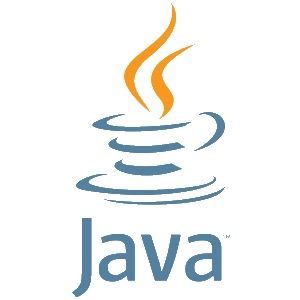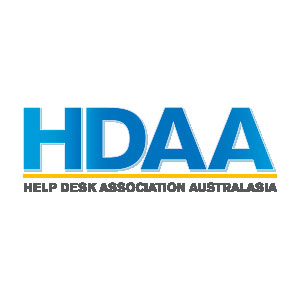-
 $2,800.00Select options
$2,800.00Select optionsAbout this course
Fast Track to Enterprise JavaBeans 3.0 (EJB 3)
The Enterprise JavaBeans 3.0 specification is a deep overhaul of the EJB specification that is intended to improve the EJB architecture by reducing its complexity from the developer’s point of view. It leverages annotations (introduced in Java 5) and Object-Relational Mapping (ORM) technologies to eliminate the dependence on complex EJB APIs, allow POJO (Plain Old Java Object) based development, and provide an effective technology for creating distributed, transactional components, and for mapping relational data to an object schema.
This course provides thorough coverage of the EJB3 technology – presented in a clear and effective manner. It starts with the basic concepts and APIs of EJB and then continues on with complex topics such as message driven beans and transactions. New concepts such as the use of annotations and the use of Dependency Injection to initialize references are covered in depth. The course also includes a solid introduction to developing persistent entities using the Java Persistence API (JPA).
The course uses hands-on labs and a well-paced approach to make this complex technology understandable in an accelerated fashion. You will come away with a comprehensive understanding of EJB and the important issues that need to be considered to use it in real world applications. This course can be customized to your requirements
-
 $3,700.00Select options
$3,700.00Select optionsAbout this course
Ajax (Asynchronous JavaScript and XML) is a browser based technology for creating highly interactive Web applications by updating parts of a Web page with new data without reloading the whole page. This results in a more responsive and interactive interface, and is the technology powering websites like Google Maps and Google Mail.
There is no formal definition of Ajax, but using XMLHttpRequest/JavaScript has become the dominant Ajax technology. The course starts with an introduction to using XMLHttpRequest and a somewhat brief introduction to JavaScript fundamentals. It includes in-depth coverage of programming with Ajax to send/retrieve data to/from a server, updating a Web page with JavaScript, and using CSS to modify the look of a Web page.
The course includes detailed coverage of how to handle Ajax requests using Servlets/JSP and Java Web applications. This includes generation of HTML, XML and JSON from Java, as well as the use of various other server-side Ajax techniques.
The course also provides extensive coverage on using frameworks – both client side JavaScript and server side Java – to support the complex programming that Ajax requires. These frameworks can reduce the sometimes complex and tedious programming that Ajax can require.
Client side frameworks can relieve you from dealing with the low level complexities of Ajax, or provide pre-existing widgets like a textbox with Ajax-powered completions. We also cover frameworks like Direct Web Remoting (DWR) to invoke server side Java from JavaScript, and Google Web Toolkit (GWT) to develop Ajax applications completely in Java, and have GWT generate the JavaScript.
This course is hands on with labs to reinforce all the important concepts. It will enable you to build working Ajax applications, and give you an understanding of the important concepts and technology in a very short time.
All labs are done using the Eclipse IDE for programming and deploying to the server, and the lab instructions include detailed instructions on using them.
-
 $2,700.00Select options
$2,700.00Select optionsAbout this course
This three-day course provides the opportunity to install the Linux operating system on both Sparc and PC systems, and to learn the skills necessary to successfully configure non-network system services, and to manage the system on a day-to-day basis. It will cover the installation of the Redhat Linux distribution and allow the attendee to assess the content and extent of Linux’s administration capabilities. Notes on other versions of Linux such as SuSE are also included in some areas. Network Administration issues are covered on the Linux System Administration (Part 2) course.
-
 $1,800.00Select options
$1,800.00Select optionsAbout this course
This comprehensive two-day course aims to equip the novice Linux user with all the skills necessary to navigate the system and make productive use of the tools available, including the Windows systems, the vi editor and essential Linux commands. It also forms the necessary foundation for subsequent Linux courses.
-
 $1,800.00Select options
$1,800.00Select optionsAbout this course
This two day course provides a follow-up to Linux System Administration (Part 1), for those who wish to network their Linux systems. The course covers the essential elements of configuring the network connection including routing, and installing major services such as NFS, NIS and DNS, plus other services. The SAMBA PC file and printer sharing software will also be briefly examined, as will the Apache webserver; working installations of both systems will be created. The course uses the Redhat and CentOS Linux ES distributions.
-
 $4,500.00Select options
$4,500.00Select optionsAbout this course
This five-day course is designed to cover the essential administration tasks confronting today’s Sun systems administrators. It covers all basic workstation administration functions, with full hands-on experience at all stages. The Solaris 11 Visual Administration Solaris Management Console (SMC) is also covered. For network administrators, this course should be followed by the Solaris 11 System Administration (Part 2) course.
-
 $1,800.00Select options
$1,800.00Select optionsAbout this course
This two-day course is designed to cover the essential network administration tasks confronting today’s Sun network systems administrators and is an extension to the Solaris 11 System Administration (Part 1) course which covers all the non-network issues. This course covers networking from initial connection through basic commands, security, monitoring and up to Network File System (NFS) and the Network Information Service (NIS+), with full hands-on experience at all stages. The use of the Admintool and Adminsuite visual tools is included.
-
 $2,000.00Select options
$2,000.00Select optionsAbout this course
Develop the skills to create exceptional customer experiences.
Service desk professionals and support Centre analysts provide front-line support and act as the primary contact for customers. It is important that these service desk professionals provide the highest quality customer care with every interaction.
HDI Support Centre Analyst training focuses on service desk strategies for effective customer service, emphasising problem-solving and troubleshooting skills, call-handling procedures, incident management, communication skills and an introduction to ITIL® processes
Hello!
We are happy to see you again!
Login to your account
[wordpress_social_login]
Register to start learning
[wordpress_social_login]
My Cart 0
